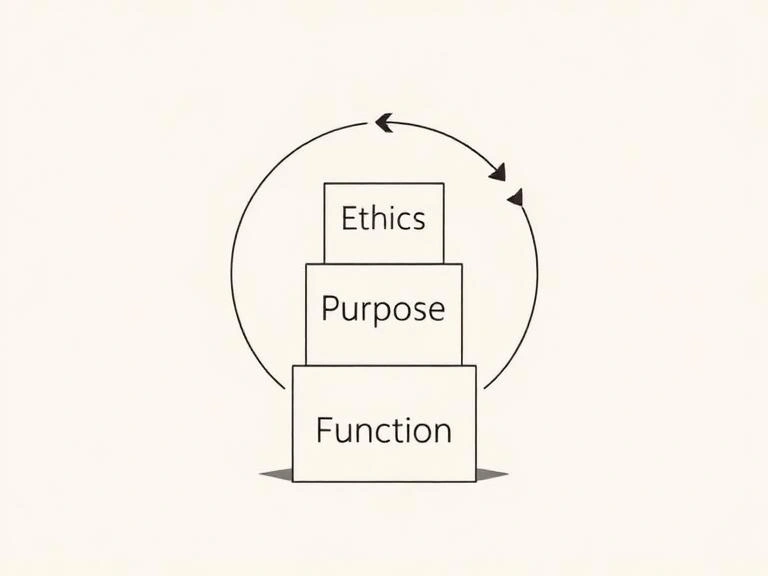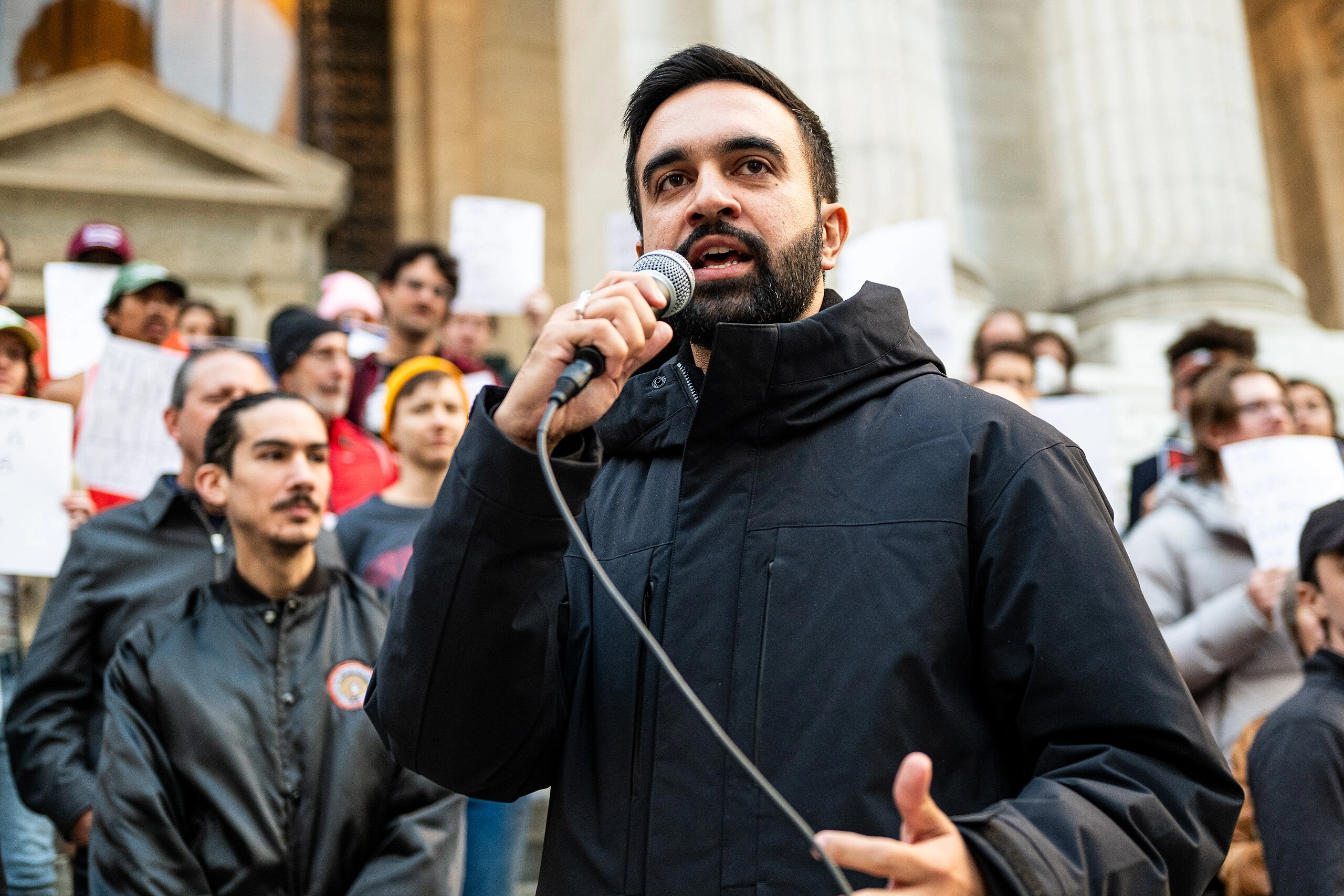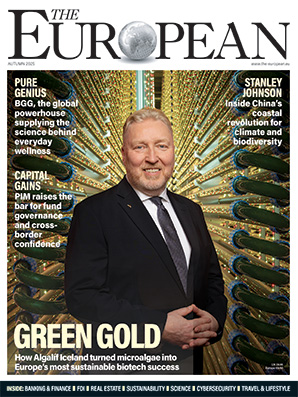Ferrari clinches Le Mans 2025 hat-trick in closest finish for years

Mark G. Whitchurch
- Published
- Opinion & Analysis
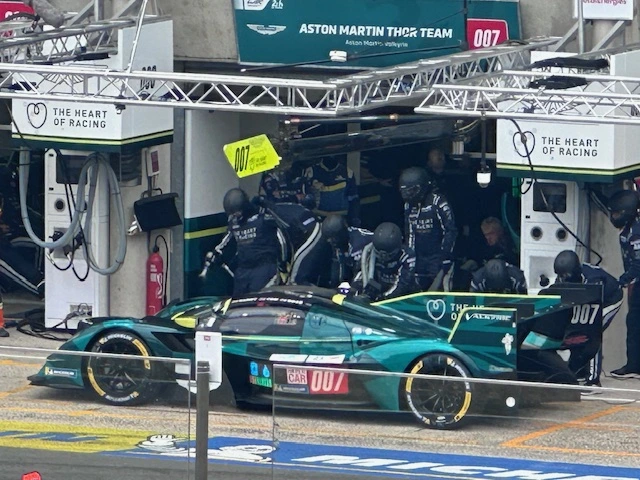
Ferrari made history at this year’s 24 Hours of Le Mans with a third straight victory, as former F1 star Robert Kubica crossed the line just 13 seconds ahead of Porsche in a dramatic photo-finish. With 300,000 spectators, a full Hypercar grid and one of the tightest results in years, the legendary race delivered spectacle on and off the track, writes our motoring editor, Mark Whitchurch
One of the world’s most famous motor races delivered one of its closest finishes in years on Sunday 15th June, as Ferrari took victory at the 2025 24 Hours of Le Mans by just 13 seconds after a full day and night of racing.
The winning car, a Ferrari 499P run by the independent AF Corse team, completed 386 laps of the Circuit de la Sarthe in northwest France. Behind the wheel at the finish line was Polish driver Robert Kubica, a former Formula 1 star, who secured Ferrari’s third straight win at Le Mans and became the first Polish driver ever to win the legendary event.
Kubica’s drive included nearly ten hours in the car, with a final three-and-a-half-hour stint under constant pressure from the chasing Porsche. When the chequered flag dropped at 4pm on Sunday, just 13 seconds separated the top two cars, an astonishingly tight margin after 24 hours of non-stop racing.
Held annually since 1923 (with pauses for war), the 24 Hours of Le Mans is the oldest and most prestigious endurance race in the world. Rather than racing for speed over a set distance, drivers aim to cover the greatest distance possible in 24 hours. Teams race through the night, change drivers in pit stops, and battle fatigue, strategy and engineering limits.
The race takes place near the town of Le Mans in north-western France and attracts hundreds of thousands of spectators. Around 300,000 people attended this year’s event, including fans, manufacturers, and motorsport professionals. In recent years, the event has enjoyed a revival as global car brands return to compete in a new era of hybrid-powered hypercars.
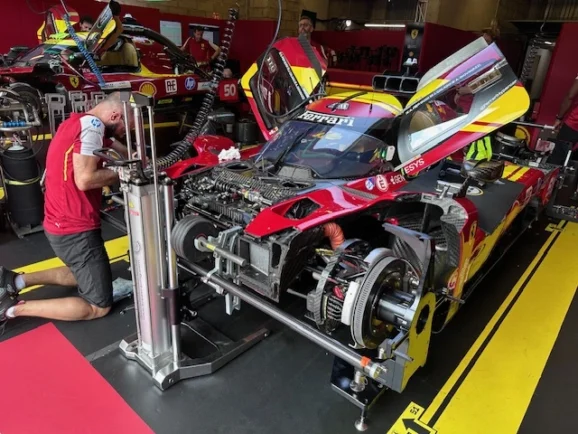
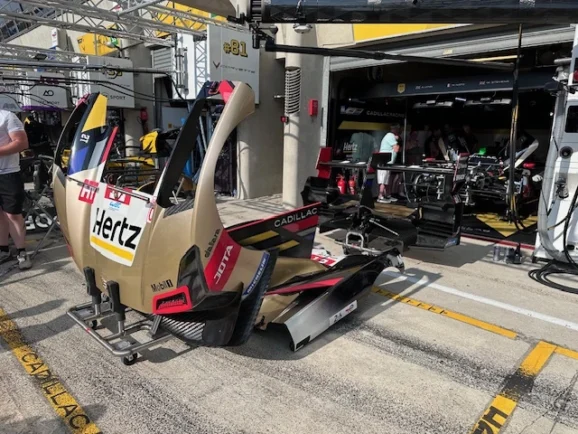
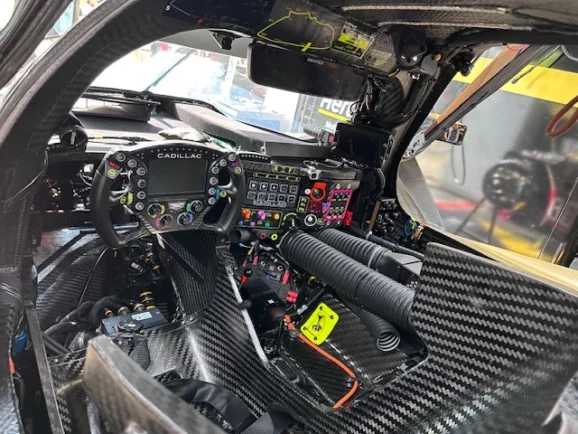
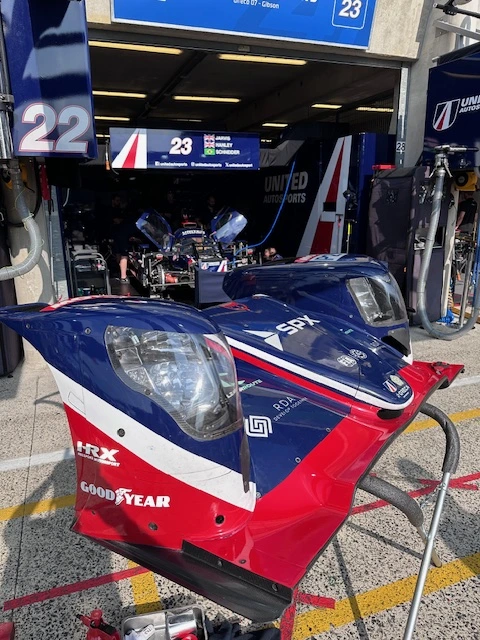

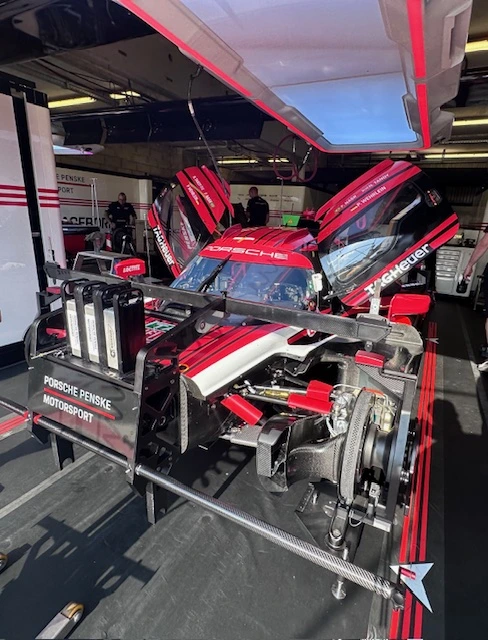

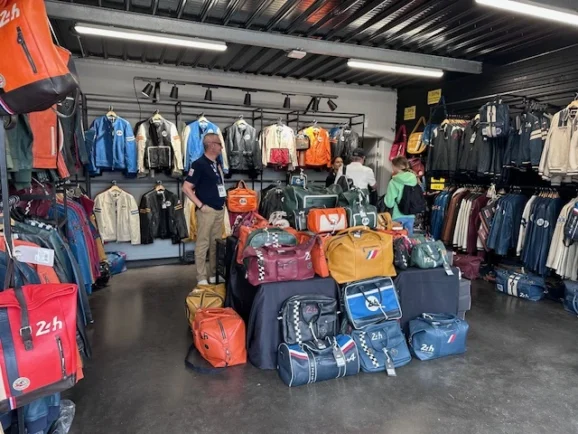
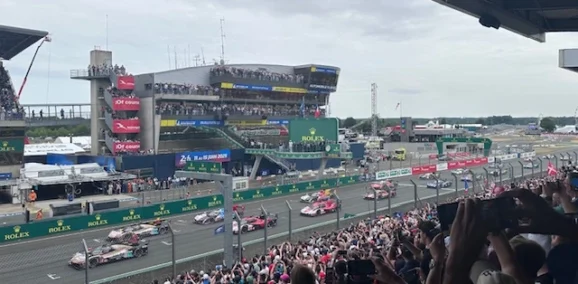
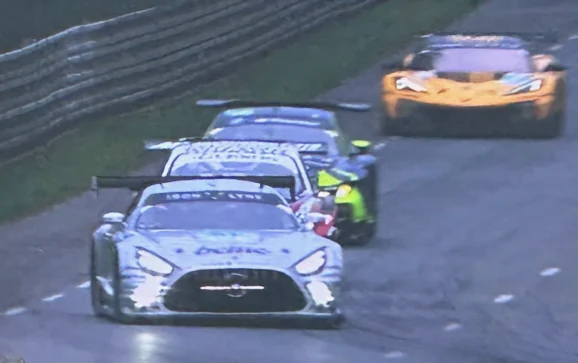
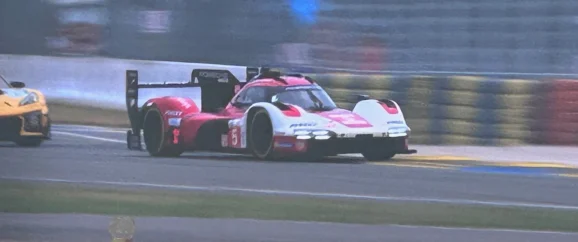
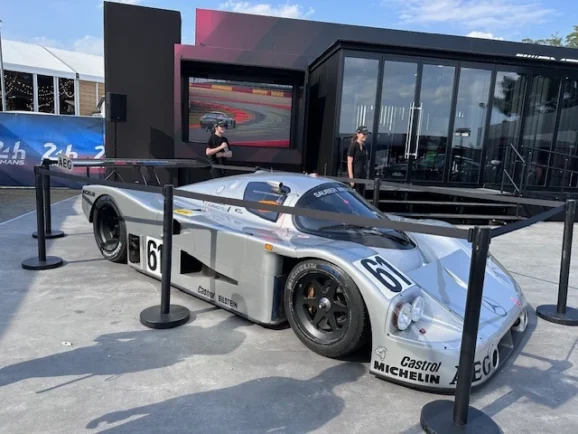
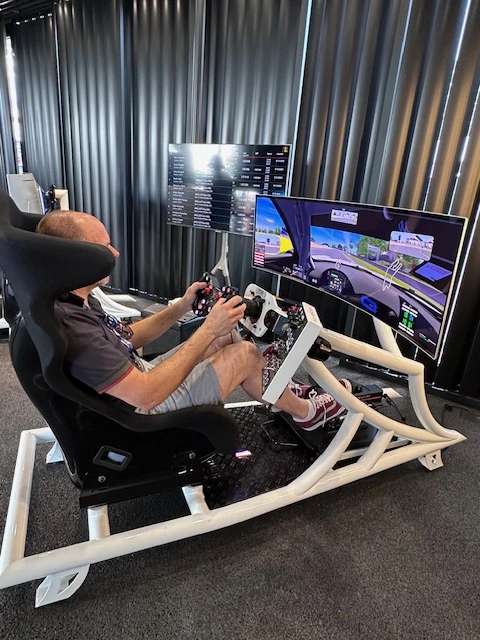
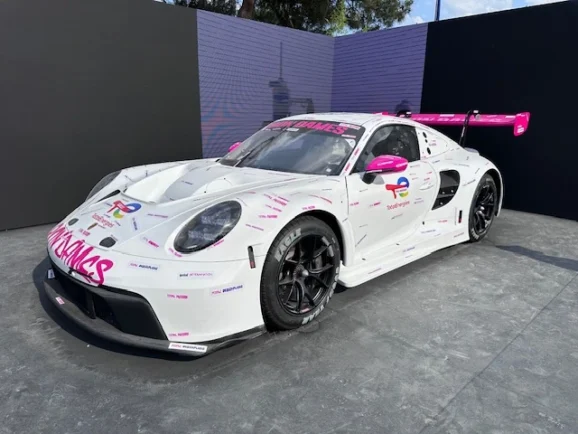

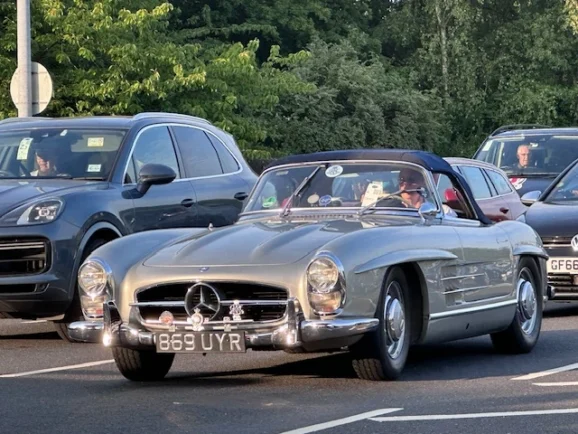
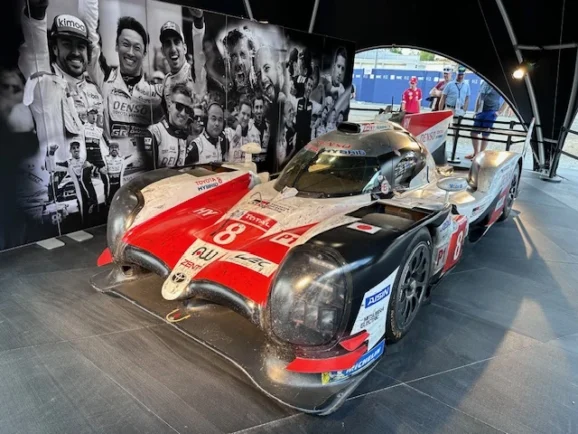
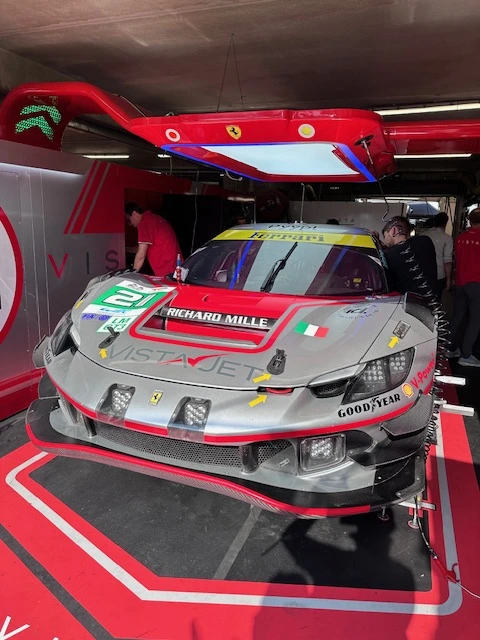

This year’s race featured one of the strongest entry lists in recent memory, with Ferrari, Porsche, Cadillac, Toyota, Peugeot, Alpine and Aston Martin all fielding cars in the top-tier Hypercar class. These are the fastest, most advanced cars in endurance racing, some of them based loosely on road-going models, but all pushing the limits of design and technology.
Ferrari returned as the team to beat, having won in 2023 and 2024. Porsche, the most successful manufacturer in Le Mans history, brought an upgraded version of its 963 prototype, run by American outfit Team Penske. Aston Martin entered two heavily modified Valkyrie hypercars, inspired by its road-going range and aiming to echo McLaren’s famous win in 1995.
Qualifying took place on the Thursday before the race, with Jota Hertz Team Cadillac securing a front-row lockout. Porsche No. 2 was disqualified from the Hyperpole session due to a weight infringement and was required to start from the back of the Hypercar field, though it remained eligible to race.
To huge cheers, the race began at 4pm on Saturday 14th June, with tennis legend Roger Federer serving as official starter.
Cadillac held the early lead, but was soon overtaken by Ferrari and Porsche. As the sun set, Ferrari occupied all three top spots led by the independent AF Corse entry driven by Kubica. Over the course of the night and into Sunday, the No. 6 Porsche closed the gap, gradually emerging as Ferrari’s biggest threat.
The 2025 edition saw remarkably few accidents or breakdowns. All nine of the leading Hypercars remained on the lead lap well into Sunday morning, underlining the level of reliability and pace across the field.
In the closing hours, the Porsche overtook both factory Ferraris and began to close in on the leader. But Kubica, enduring visible fatigue and high pressure, held firm in the final stages. He crossed the line just after 4pm on Sunday, earning a hugely popular win and personal redemption after missing out on victory last year due to a penalty.
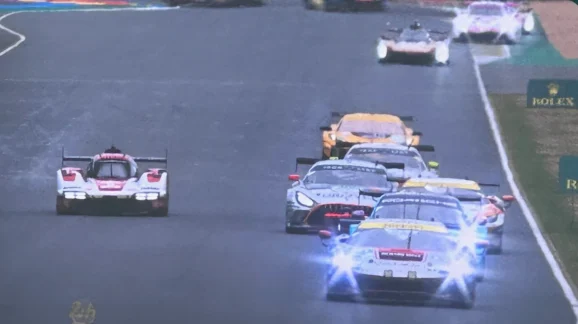
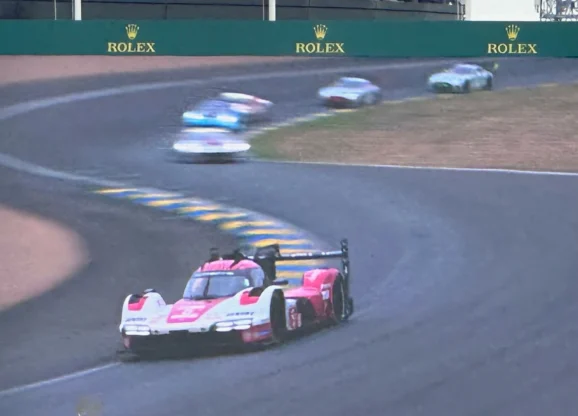
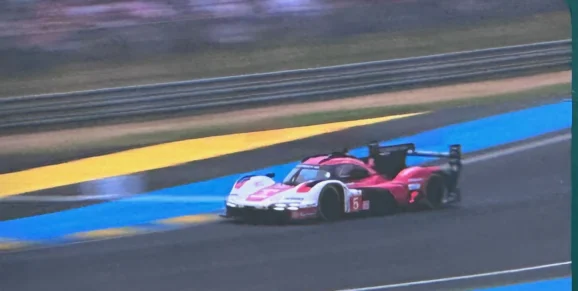
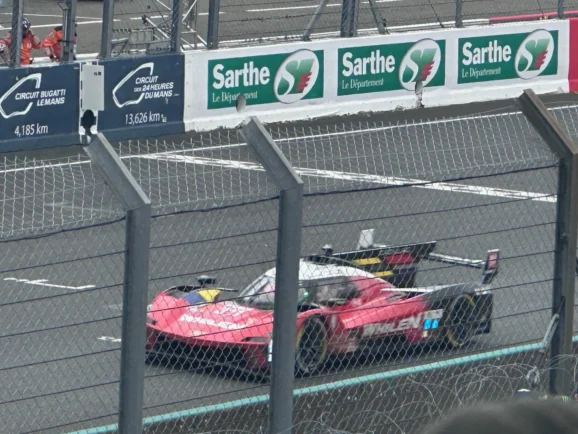
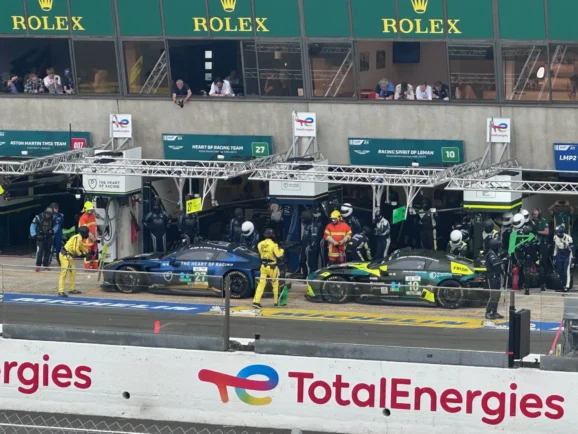
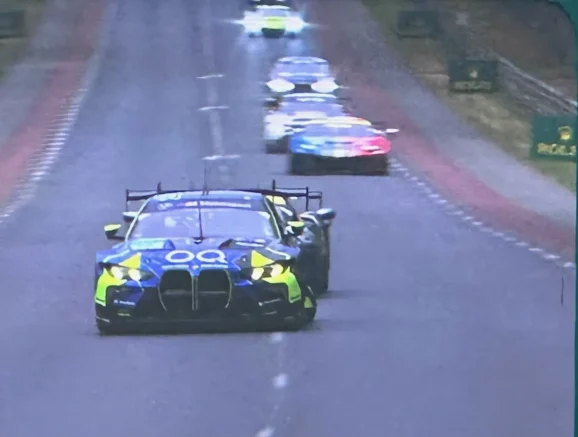

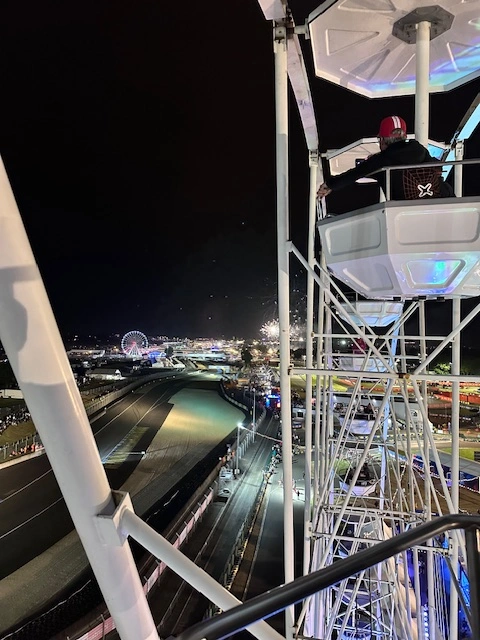

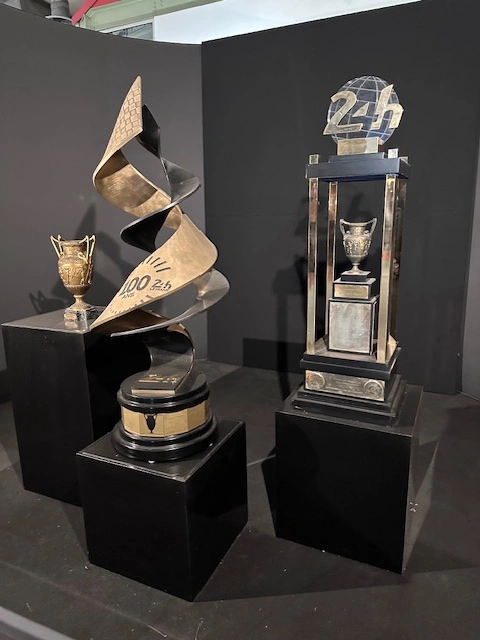
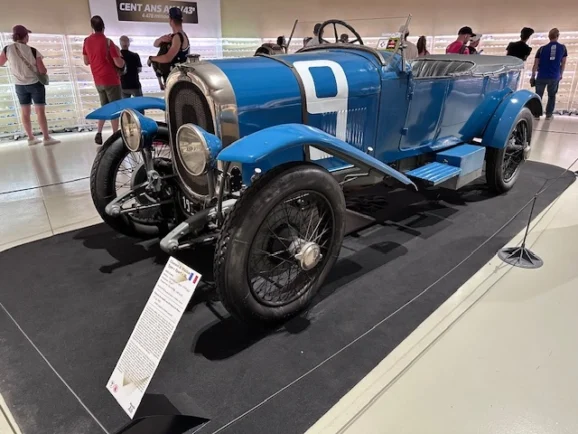
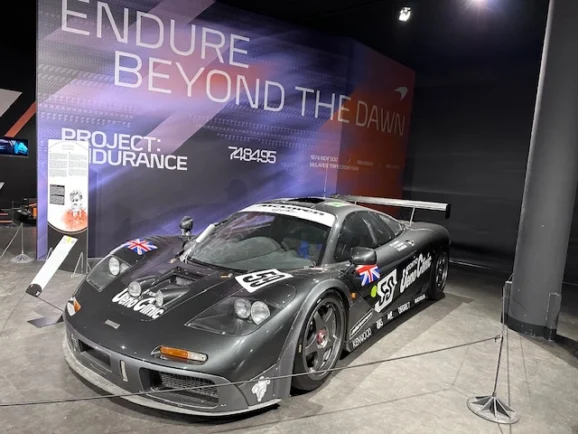
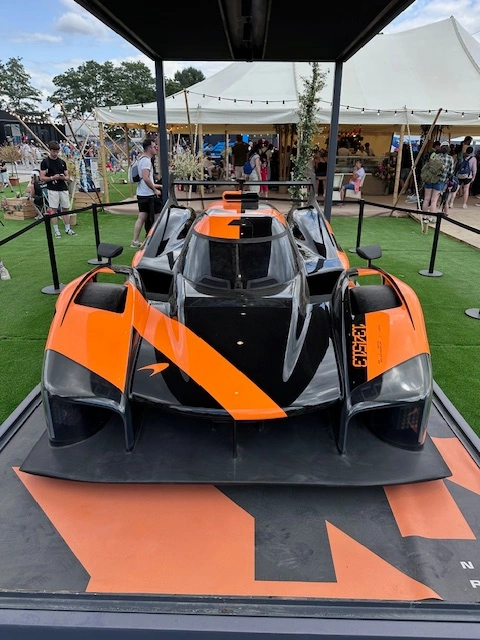
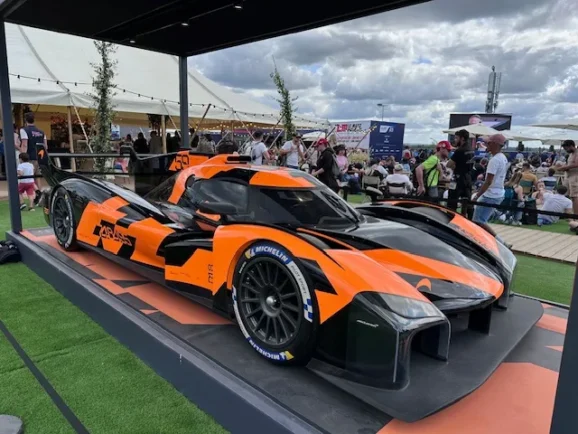
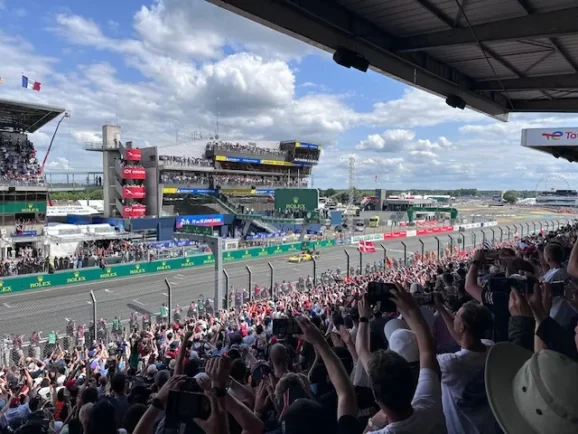

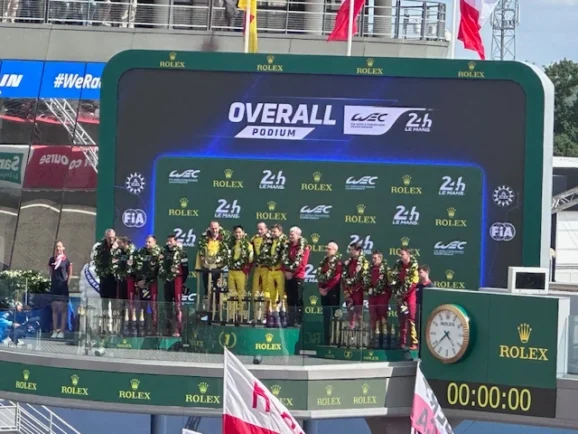
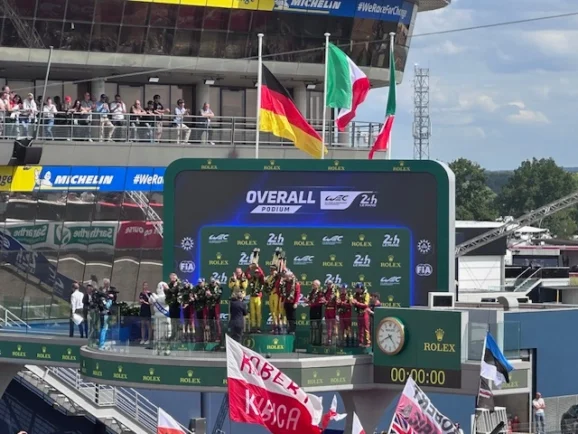
Porsche, while narrowly missing out on the overall win, took first place in the new GT3 class, a category featuring race-tuned versions of high-end road cars, thanks to its Manthey-run 911 GT3.
Toyota and Cadillac both stayed within reach of the leaders but lacked the final pace to challenge for victory. Aston Martin would have been pleased to bring both of its Valkyrie hypercars to the finish line and confirmed that further development is planned ahead of next year’s race.
Meanwhile, McLaren used the event to unveil a new hypercar that will race from 2027. The British brand also celebrated its unique achievement of having won Le Mans, the Indianapolis 500, and the Monaco Grand Prix, racing’s so-called Triple Crown.
Ferrari’s hat-trick of wins confirms its dominance in a sport it only returned to recently, having re-entered top-tier endurance racing in 2023 after a 50-year break.
Le Mans 2026 Fact File
If you’re thinking of making the trip to Le Mans next year, now is the time to start planning. With ticket sales opening early, accommodation filling fast, and demand higher than ever after a thrilling 2025 race, this guide sets out everything you need to know to organise your visit, from travel options and where to stay, to what to expect once you’re trackside.
Getting There
In my experience, the most efficient and enjoyable way to reach Le Mans from the UK is by taking the Eurotunnel from Folkestone to Calais. The trains are frequent, the process is swift, and in 2025, the return fare worked out at around half the cost of taking the ferry.
For a car enthusiast, the trip begins long before reaching France. If you own something special (or even just something you love to drive) this is the trip to bring it. Half the fun is seeing what everyone else turns up in and being part of the rolling celebration that starts the moment you hit the terminal.
I made the journey in my own Porsche 911 and at UK passport control found myself behind a beautifully preserved 1957 Mercedes-Benz 300SL Roadster, surrounded by a queue of Ferraris, Jaguars, Aston Martins and dozens of other 911s all waiting to board the train.
Once on the French side, I took the autoroute south to Le Mans, a drive of about five hours. With a teenage daughter as my co-pilot, we stopped for lunch in Orbec, a small town in Normandy that offered a welcome break from the motorway and a chance to stretch our legs over good food and easy parking.
For anyone with more time, I’d highly recommend taking the scenic route via France’s back roads. You sacrifice a bit of speed but gain a far more rewarding drive and far fewer tolls.
Tickets and Accreditation
Tickets for Le Mans come in all forms: general admission, grandstand seats, camping, glamping, or hotel-based packages. In 2025, I opted for grandstand seats, which offered clear views of the podium, pit lane and start/finish straight at a fraction of what you’d pay for similar views at a Formula 1 weekend.
Accommodation
Rather than risk a wet tent and broken sleep, I booked a hotel just south of the circuit, and I’m very glad I did. Three nights cost less than some glamping options and came with all the essentials: a proper bed, a hot shower, and that priceless amenity…peace.
Being off-site also meant I could pop into the local patisserie each morning. Stocking up on fresh baguettes, fruit, cheese and charcuterie became a daily pre-track ritual and made for the perfect circuit-side picnic.
Fan Zones and Facilities
Yes, Le Mans is about racing but the main fan zones are a festival in their own right, packed with live music, beer tents, circus performers and manufacturers’ stands. In 2025, Toyota celebrated 40 years of Le Mans history, and McLaren used the weekend to unveil its new road-derived hypercar, set to join the race in 2027.
Everywhere we walked, stands were handing out flags, wristbands, stickers and postcards. By Saturday afternoon, we’d filled two tote bags and my daughter’s bedroom wall is now a patchwork of Le Mans freebies.
One of my personal highlights was the central lawn area, where you can sink into a giant beanbag and watch the race on a huge screen, surrounded by fans from across Europe. It felt like a Bavarian beer hall crossed with a motorsport village: rowdy, friendly and brilliantly international.
Watching the Race
I made it a point to explore as many vantage points as possible. Between our grandstand seats, the Porsche Curves, and a well-timed ride on the Ferris wheel at midnight, I got to experience Le Mans from every possible angle. From dusk into darkness, the circuit transformed into something magical, with spotlit pit crews and fireworks lighting up the sky.
Radio Le Mans, broadcasting in English, was a must-have throughout the weekend. I used headphones to tune in for live race commentary and updates, which was especially helpful when the on-site screens and speakers defaulted to French.
Trackside Extras
As a Porsche owner, I had access to the Open House hospitality centre beside the Porsche Experience Centre. It offered a quieter space to regroup, complete with interactive displays, games and a photo booth to capture the weekend.
It was also a great chance to talk shop with other owners, another reminder that Le Mans is as much about the people as it is about the cars.
The Museum and Off-Track Highlights
On Sunday morning, with the race still unfolding, we took a break to visit the Le Mans 24H Museum, located by the main entrance. I was especially drawn to the original 1923 Chenard & Walcker, the Porsche 917s, and the 1995 McLaren F1 GTR, the car that won the race the year I first started following it closely.
The museum is a brilliant reminder of just how deep the history runs here, a quiet contrast to the roar of the track outside.
Post-Race and Departure
After the race ended and the Champagne was sprayed on the podium, thousands of us joined the traditional track invasion, walking along the pit straight to take it all in one last time.
While most of the 300,000 fans packed up straight away, I stayed for a relaxed post-race debrief at a friend’s campsite. It gave me a quick glimpse of the camping experience (nice but enough to confirm I was still glad of my hotel bed).
On the Monday morning, we hit the road for a leisurely return to Calais, stopping in a few sleepy villages along the way.
Travel Organiser
I booked the whole trip through 1st Tickets, which handled tickets, hotel, parking and logistics with real professionalism. They took care of all the fiddly bits so I could focus on what mattered: making memories.

Mark G. Whitchurch is a seasoned motoring journalist whose work—covering road tests, launch reports, scenic drives, major races, and event reviews—has appeared in The Observer, Daily Telegraph, Bristol Evening Post, Classic & Sports Car Magazine, Mini Magazine, Classic Car Weekly, AutoCar Magazine, and the Western Daily Press, among others. He won the Tourism Malaysia Regional Travel Writer of the Year in 2003 and is a member of The Guild of Motoring Writers.
All images: Mark G. Whitchurch
Sign up to The European Newsletter
RECENT ARTICLES
-
 Why Greece’s recovery depends on deeper EU economic integration
Why Greece’s recovery depends on deeper EU economic integration -
 Why social media bans won’t save our kids
Why social media bans won’t save our kids -
 This one digital glitch is pushing disabled people to breaking point
This one digital glitch is pushing disabled people to breaking point -
 Japan’s heavy metal-loving Prime Minister is redefining what power looks like
Japan’s heavy metal-loving Prime Minister is redefining what power looks like -
 Why every system fails without a moral baseline
Why every system fails without a moral baseline -
 The many lives of Professor Michael Atar
The many lives of Professor Michael Atar -
 Britain is finally having its nuclear moment - and it’s about time
Britain is finally having its nuclear moment - and it’s about time -
 Forget ‘quality time’ — this is what children will actually remember
Forget ‘quality time’ — this is what children will actually remember -
 Shelf-made men: why publishing still favours the well-connected
Shelf-made men: why publishing still favours the well-connected -
 European investors with $4tn AUM set their sights on disrupting America’s tech dominance
European investors with $4tn AUM set their sights on disrupting America’s tech dominance -
 Rachel Reeves’ budget was sold as 'fair' — but disabled people will pay the price
Rachel Reeves’ budget was sold as 'fair' — but disabled people will pay the price -
 Billionaires are seizing control of human lifespan...and no one is regulating them
Billionaires are seizing control of human lifespan...and no one is regulating them -
 Africa’s overlooked advantage — and the funding gap that’s holding it back
Africa’s overlooked advantage — and the funding gap that’s holding it back -
 Will the EU’s new policy slow down the flow of cheap Chinese parcels?
Will the EU’s new policy slow down the flow of cheap Chinese parcels? -
 Why trust in everyday organisations is collapsing — and what can fix it
Why trust in everyday organisations is collapsing — and what can fix it -
 In defence of a consumer-led economy
In defence of a consumer-led economy -
 Why the $5B Trump–BBC fallout is the reckoning the British media has been dodging
Why the $5B Trump–BBC fallout is the reckoning the British media has been dodging -
 WPSL Group unveils £1billion blueprint to build a global golf ‘super-group’
WPSL Group unveils £1billion blueprint to build a global golf ‘super-group’ -
 Facebook’s job ads ruling opens a new era of accountability for artificial intelligence
Facebook’s job ads ruling opens a new era of accountability for artificial intelligence -
 Robots can’t care — and believing they can will break our health system
Robots can’t care — and believing they can will break our health system -
 The politics of taxation — and the price we’ll pay for it
The politics of taxation — and the price we’ll pay for it -
 Italy’s nuclear return marks a victory for reason over fear
Italy’s nuclear return marks a victory for reason over fear -
 The Mamdani experiment: can socialism really work in New York?
The Mamdani experiment: can socialism really work in New York? -
 Drowning in silence: why celebrity inaction can cost lives
Drowning in silence: why celebrity inaction can cost lives -
 The lost frontier: how America mislaid its moral compass
The lost frontier: how America mislaid its moral compass





